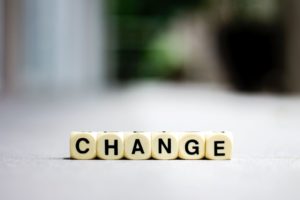Focusing Change

I like change. Doing something new, or doing something familiar in a different way, makes my brain work differently. I like that.
This doesn’t mean I like all change equally. Change without context, for instance, can feel disruptive:
- Change requires giving up something familiar.
- Change requires setting aside some past successes.
- Change requires navigating the unknown.
- Change without context can lead us to create our own reality of what is to come.
Over the past 20 years, I’ve been involved with large organizational changes to improve business processes, standardize operational practices, institutionalize metrics and build other efficiencies. I’ve also had opportunities to learn from the experiences of change leaders in other organizations.
Our collective experience has repeatedly shown the importance of two things – simplified messaging and a listening strategy.
Simplified Messaging
Simple, clear, relevant messages are important to anyone experiencing change. Three questions can help simplify early messaging:
-
Why now?
Answering this question often identifies the business, legislative, programmatic, budgetary, or other organizational drivers for change. Whether the change catalyst is the renewal of legacy systems, re-apportionment of funding, new tracking and reporting requirements, organizational realignments or new technology integration, the answer to the question ‘why now?’ can build understanding and acceptance for upcoming changes.
This question can also initiate conversation about the path forward should the status quo continue, should change not occur.
-
Why this?
The change catalyst may be the need for automation, increased efficiencies, business realignment or transitions. The question of ‘why this?’ generates discussion of options, conditions that must be met, priorities, trade-offs and other issues that had to be considered in determining the response to the change catalyst.
Each person affected by change brings a unique combination of experiences and viewpoints that can work to support the change. Invite the questions, details, and other contributions important to know early.
-
What will and will not be affected?
The tendency is to focus on what will change. Just as important is knowing what will remain unchanged. This balance can alleviate some angst associated with the unknowns of change and can give a beacon that bridges the former with the new.
The difficulty? Knowing what will and will not change may very well be questions answered over time, through discovery. Having this as an expectation when building the communication plan can more easily allow room for shifts, contingency plans and other messaging strategies down the road.
The Listening Strategy
An important component of the communication plan is the listening strategy. Receiving the perspectives of those impacted by change – whether that be employees, suppliers, customers or another segment of the organization’s relationship channels – is significant in knowing whether the message intended from the communication plan is the one received.
For instance, the listening strategy may include formal listening sessions structured much like focus groups – with a discipline to receiving a total picture of information from the participants in addition to individual perspectives. Sessions can be focused through various information-gathering, idea organization or other means for identifying key themes as well as individual comments. Listening sessions can occur throughout the change initiative, from inception to implementation and beyond. The important item – in communications, link back to comments received from listening sessions as the change initiative proceeds and attribute the listening session as the means for hearing the item referenced. Let the participants understand their words made a difference.
Another part of the listening strategy may be the use of a channel through which individuals can send comments, questions or other concerns without reprisal. Comments go to a change, program or other executive and responses are sent back to the submitter. Just like in listening sessions, link future communication content to comments, ideas or concerns raised as a result of the channel, demonstrating that individuals were heard.
Another entity within the listening strategy are sessions or channels targeted specifically for leadership segments of the employees. Leadership is affected by change both as an employee and as a leader, bringing unique challenges to this role in the organization. Giving them a means to express concerns or seek peer-to-peer assistance can provide a sense of well-being that is uniquely tied to the leadership role.
I worked with the federal government on a global system upgrade whose implementation would impact a wide range of activities. This system would affect daily activities like the documentation of time and tasks as well as large scale business activities including procurement, fiscal management and more. With this complex, far-reaching impact, the program office developed a comprehensive listening strategy that included regularly scheduled, online events for the span of the organization as well as individual means for employees to ask questions and express concerns. A small team of specialists managed the overall listening strategy as well as the day-to-day questions. One key to the listening success was the response always came from the program leader. She was accountable for all activities with this implementation, including its impact on employees.
Are You Ready for Change?
Change is everywhere. Change is ongoing and evolutionary. And change is necessary. Simplifying messages and listening with intent can move the outcome of change through earlier acceptance, faster adaptation, and a shorter period for implementation. Best of success in your next change endeavor!
Sometimes, the best success comes when you partner with an outside consultant who can provide objective advice to guide your change efforts. Momentum has this expertise – contact us today!
Kathy Kieffer – Consultant
 Kathy C. Kieffer is an experienced Project Manager, Business Analyst, Organizational Change consultant, team leader, instructional designer, and facilitator. She has worked in traditional and hybrid project environments as a knowledgeable and skilled leader in stakeholder management, high-level and detailed project planning, training design and more. With an agile mindset for efficiency and waste elimination, and experience in both public and commercial sectors, Ms. Kieffer completes tasks with a viewpoint of service to clients and constituencies along with discipline and a value-adding perspective. She thinks strategically and performs locally. As a certified Change Management Professional, Kathy can lead and support organizations through incremental and radical changes. By integrating her knowledge, experience, and perspectives, Kathy can think beyond her immediate assignments to a larger, more holistic view of the work she does and the role she plays. This leads her to think in terms of business objectives, operational metrics, and other success indicators.
Kathy C. Kieffer is an experienced Project Manager, Business Analyst, Organizational Change consultant, team leader, instructional designer, and facilitator. She has worked in traditional and hybrid project environments as a knowledgeable and skilled leader in stakeholder management, high-level and detailed project planning, training design and more. With an agile mindset for efficiency and waste elimination, and experience in both public and commercial sectors, Ms. Kieffer completes tasks with a viewpoint of service to clients and constituencies along with discipline and a value-adding perspective. She thinks strategically and performs locally. As a certified Change Management Professional, Kathy can lead and support organizations through incremental and radical changes. By integrating her knowledge, experience, and perspectives, Kathy can think beyond her immediate assignments to a larger, more holistic view of the work she does and the role she plays. This leads her to think in terms of business objectives, operational metrics, and other success indicators.
 Tap to email
Tap to email
